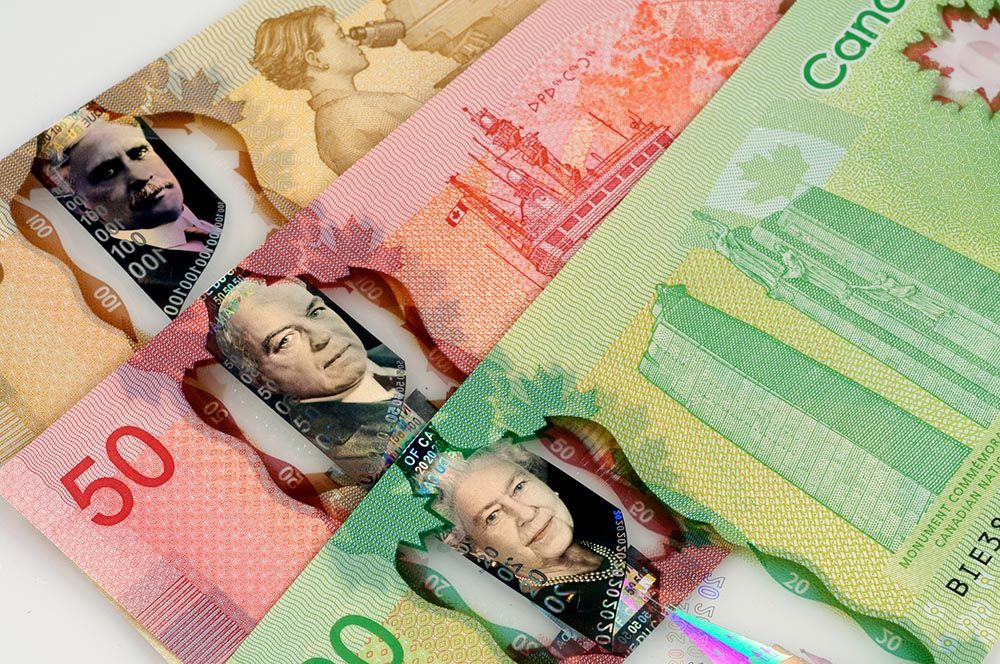Canadian Dollar Seen Entering New and Lower USD/CAD Range
- Written by: James Skinner
-
- USD/CAD breaking into lower range
- Could slip to 1.2450 in weeks ahead
- CIBC et al sellers on rallies to 1.26+
- Reinforces headwinds for GBP/CAD

Image © Bank of Canada
The Canadian Dollar overcame and held a series of important technical resistance levels against the U.S. Dollar this week, leading some analysts to look for a fall toward 1.2450 by USD/CAD, which would likely add further weight around the ankles of GBP/CAD.
Canada’s Dollar benefited from a broad retreat in U.S. exchange rates this week in addition to robust market demand for currencies with commodity linkages or central banks that are lifting interest rates in response to the rising tide of inflation sweeping the world economy.
This saw USD/CAD slip through a cluster of technical support levels located between 1.2600 and 1.2575 early in the week before falling close to the round number of 1.25 on Thursday, although strategists at CIBC Capital Markets and Scotiabank have both suggested further declines are likely ahead.
“In the STIR market, there are now asymmetric risks to how the Fed is priced for this year. That has removed a key tailwind for the USD in the near-term,” says Bipan Rai, North American head of FX strategy at CIBC Capital Markets.
“From a technical perspective, USD/CAD now looks to be taking out the trend line off of the 2021 low that we’ve been flagging for a while in our daily notes,” Rai later said in a research note on Wednesday.
Above: USD/CAD shown at daily intervals with Fibonacci retracements of 2022 rally and trendline drawn from 2021 lows indicating possible areas of technical support for USD.
- Reference rates at publication:
GBP to CAD spot: 1.6556 - High street bank rates (indicative): 1.5977 - 1.6092
- Payment specialist rates (indicative: 1.6407 - 1.6470
- Find out about specialist rates and service, here
- Set up an exchange rate alert, here
Canadian Dollar gains have built as U.S. Dollar exchange rates eased lower throughout the week in a pattern of price action that has favoured commodity-linked currencies most strongly while penalising more heavily the largest importers of raw materials.
U.S. Dollar declines extended moves that began after the Federal Reserve lifted its interest rate last Wednesday and continued throughout much of the week even after Chairman Jerome Powell indicated that U.S. rates could rise at a much faster pace than was thought likely just a few short months ago.
“This Fed cycle has been very unusual in that the market has been able to price a complete hiking cycle - including high probabilities of 50bp hikes, a large quantitative tightening (QT) program, and three rate cuts beyond 2023 - almost all before the first hike was even delivered. In our view, this implies that much of the market impact should now be baked in,” says Ralph Axel, a rates strategist at BoA Global Research.
The prognosis among many analysts is that declining U.S. Dollar exchange rates reflect profit-taking on hefty wagers built up by investors during the months ahead of the Fed’s March decision to begin lifting its interest rate, which is now widely expected to rise two percent or more by year-end.
{wbamp-hide start}
{wbamp-hide end}{wbamp-show start}{wbamp-show end}
This has been rapidly priced-into U.S. and international assets since June 2021, which potentially explains the market’s fading appetite for the greenback as well as much of this week’s fall in USD/CAD.
“While trend oscillators are tilting bearish for the USD across the short-term studies, amplifying downside risks from a technical point of view, we would still prefer to see another close below trend support—or a more definitive move lower—to support the prospect of more significant, near-term losses (towards 1.2400/50),” says Shaun Osborne, chief FX strategist at Scotiabank, writing in a Thursday note.
While market appetite for the U.S. Dollar has cooled in recent weeks and USD/CAD held Wednesday’s close beneath what analysts call “trendline support” on Thursday, Scotiabank and CIBC Capital Markets have both expressed a reluctance to chase the move lower in the short-term.
CIBC’s Rai has, however, suggested that clients of the bank consider selling USD/CAD on any rallies back toward the 1.2650 area in anticipation of another, eventual leg lower over the coming quarter that would potentially also have implications for GBP/CAD.
Above: GBP/CAD shown at daily intervals alongside USD/CAD.
Secure a retail exchange rate that is between 3-5% stronger than offered by leading banks, learn more.
“We’re still reasonably confident that the 1.2450 area will hold. The risk-reward of shorting here and targeting that level isn’t appealing at this point,” CIBC’s Rai explained.
“For now, we’re updating our base case for USD/CAD with price action now expected to be range bound between 1.2450-1.2650. Moves to the upper end of that range should be sold,” he also said.
GBP/CAD tends to closely reflect the relative performance of Sterling and the Loonie when each is measured against the U.S. Dollar but also often demonstrates a negative correlation with USD/CAD.
This relationship could mean that any further or future declines in USD/CAD would be likely to act like a weight around the ankles of a Pound to Canadian Dollar rate that was already sinking even before this week’s price action.
GBP/CAD fell to its lowest level since March 2020 as USD/CAD broke beneath 1.26 this week and any further slippage toward 1.2450 by USD/CAD would potentially see Sterling at risk of falling closer toward its post-Brexit referendum lows.
Above: GBP/CAD shown at weekly intervals.













